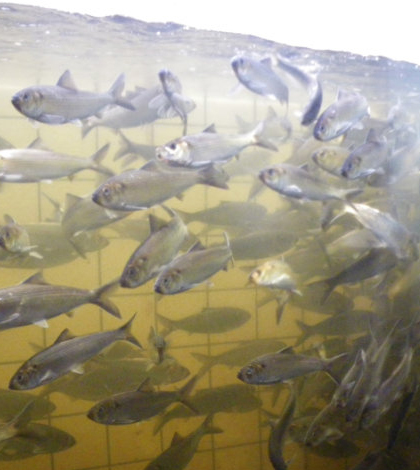Dam Impact Analysis Model Predicts Impacts For Sea-Run Fish

River herring seen through a viewing area in the model. (Credit: Donald Dow / NEFSC/NOAA)
Diadromous fish, or fish that spend part of their life cycle in freshwater and part in saltwater, are especially sensitive to the effects of dams and other structures that impact water flow. To assess the severity of effects these structures might have on fish, scientists with the National Oceanic and Atmospheric Administration’s Northeast Fisheries Science Center have devised a Dam Impact Assessment Model, according to a release.
The Atlantic salmon population of New England’s Penobscot River were used to test the model. Effects of dams on those salmon were shown to result in either direct or indirect mortality. Direct mortality occurs because of the fishes’ interactions with parts of a dam itself, such as when they swim over fishways. Indirect mortality can occur because of increased predation in the dammed environment.
The model showed that the number and location of dams had a significant impact on fish survival, with salmon abundance going up when more dams were removed. Mainstem dams also had a more significant impact than tributary dams.
Top image: River herring seen through a viewing area in the model. (Credit: Donald Dow / NEFSC/NOAA)





0 comments